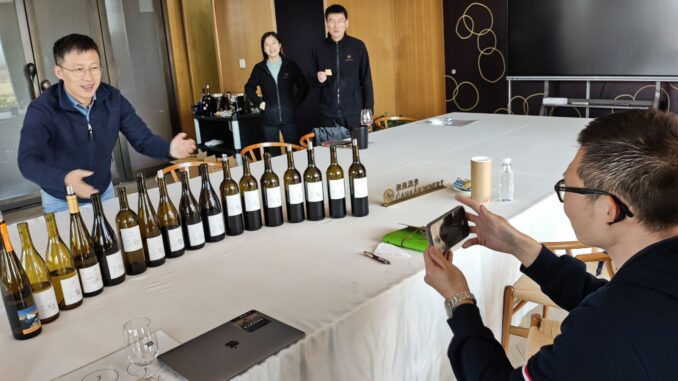
Grapes from Hungary and Germany. Two sparkling surprises. A 15-year flight of a top-ten China wine. And more.
Sometimes you visit a winery and expect one thing but find quite another. I joined Shuai Zekun, senior editor at James Suckling, on a trip to sibling operations Canaan and Domaine Franco Chinois (DFC) — both among the country’s top operations — for a tasting with winemaker Zhao Desheng and his team.
And it once again showed that even amid a consumption crisis, Chinese wineries keep pushing ahead on quality and diversity.
Below are eight surprises and highlights from that trip just outside Beijing.
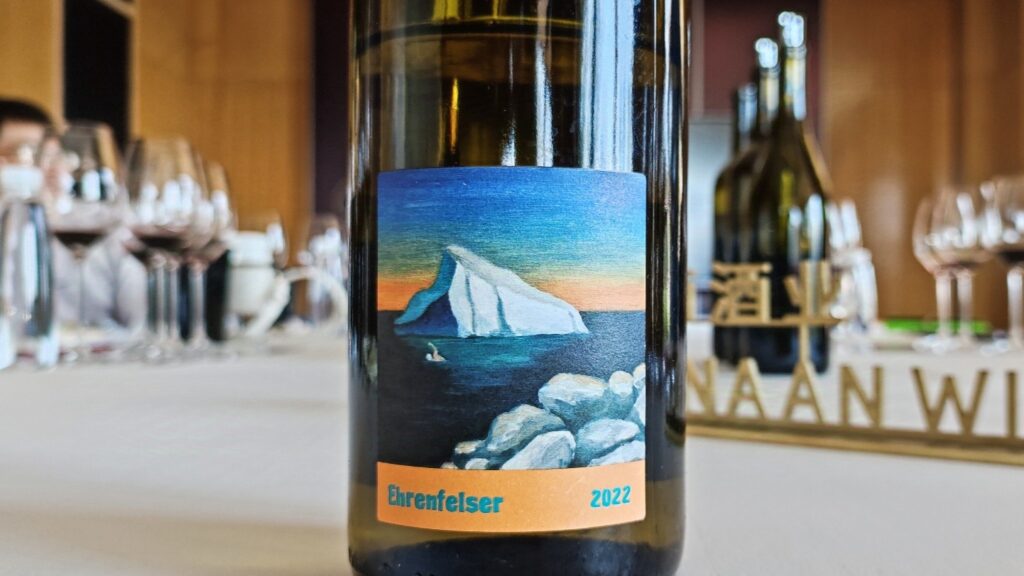
ONE
Our first wine: Ehrenfelser, a rarity in China, with Canaan’s experimental holdings a mere four mu — a quarter-hectare — planted almost a decade ago.
Last year, we tasted this Riesling and Knipperle cross, created in 1929, as part of a blend. This year it starred on its own, featuring aromas of fresh pears and peaches with hints of chrysanthemum and celery. Fairly juicy and lively with a slight white pepper spiciness — Shuai also singled out ginger. A wine with attitude.
And it isn’t alone in das vineyards. Canaan has small amounts of two other German varieties, Muller-Thurgau and Dakapo, too.
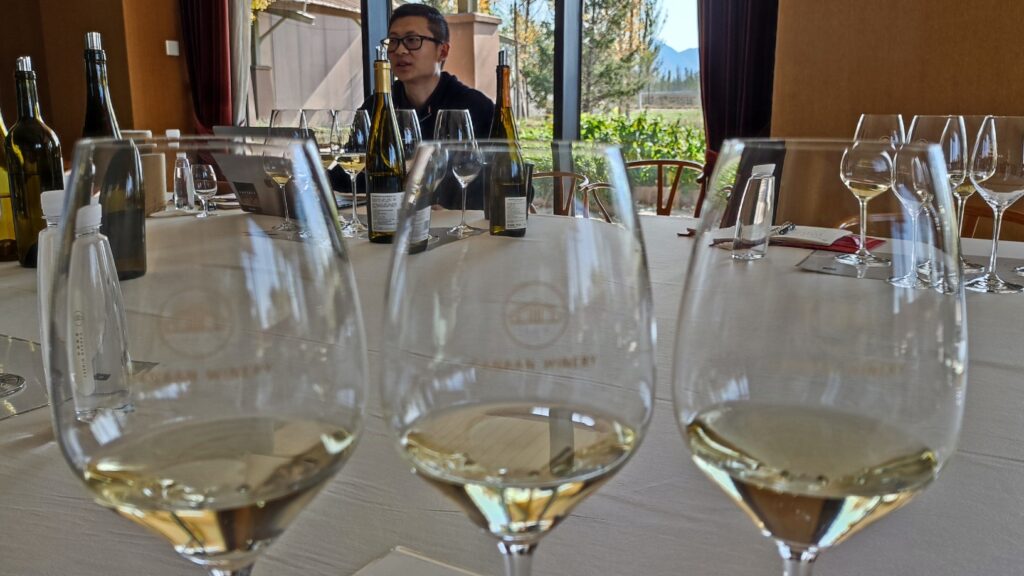
TWO
Of the Canaan whites, my favorite was an edgy 2022 Riesling with light telltale diesel hints as well as tropical fruit character and later ripe pear and apple. Nice green apple acidity with a touch of honey. [Shuai also noted a flint character.]
As China gradually moves from status-based to pleasure-based consumption, white wine is taking market share, and this Riesling should appeal. We also tried Pinot Gris, Sauvignon Blanc and three Chardonnays on this visit.
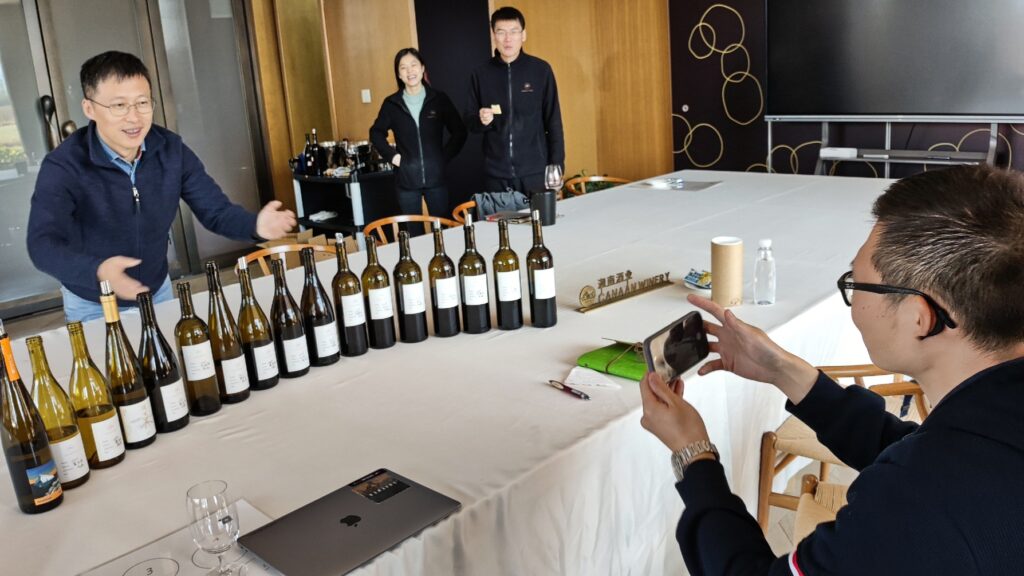
THREE
That Chardonnay made me wonder about possible plans for sparkling wine, given we increasingly see these in China, including a wide quirky range of pet-nats as well as traditional-method bubblies from producers such as Domaine Chandon, Grace Vineyard, SunGod (see below) and DEVO, with Helan Qingxue among the others experimenting.
Indeed, Canaan is working on its own traditional-method bubbly, one to feature Chardonnay, Pinot Noir — and Riesling!
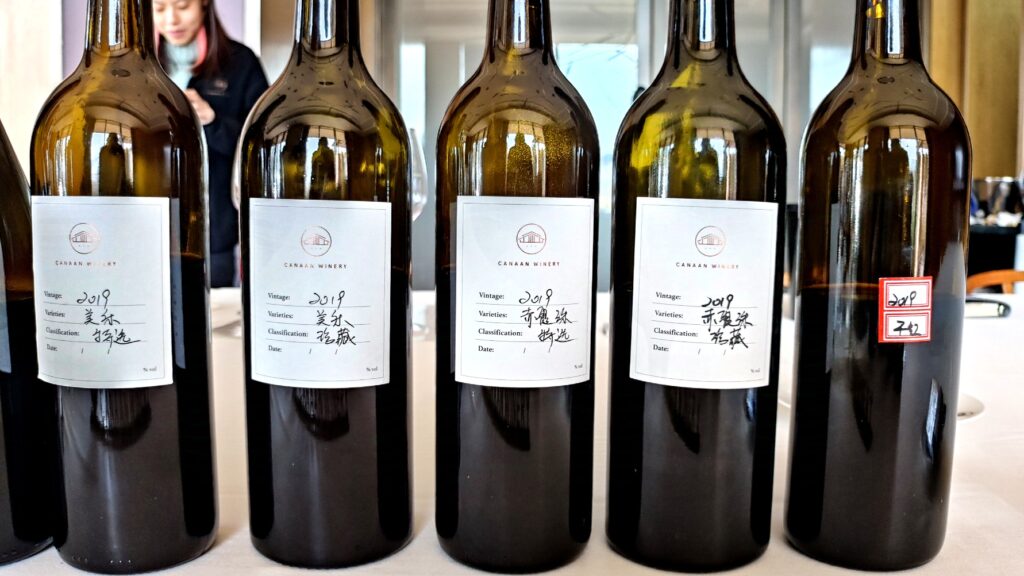
FOUR
As at most Chinese wineries, reds are a far greater focus, and that means everything from Merlot, Marselan and Tempranillo to Pinot Noir, Petit Verdot and Cabernet Sauvignon at Canaan.
We tried Select (entry), Mastery and Reserve, mostly 2019 and 2021, and they offered quality across the board. (See Shuai’s upcoming China 2024 report: I’m confident most will score 90 to 95 points.)
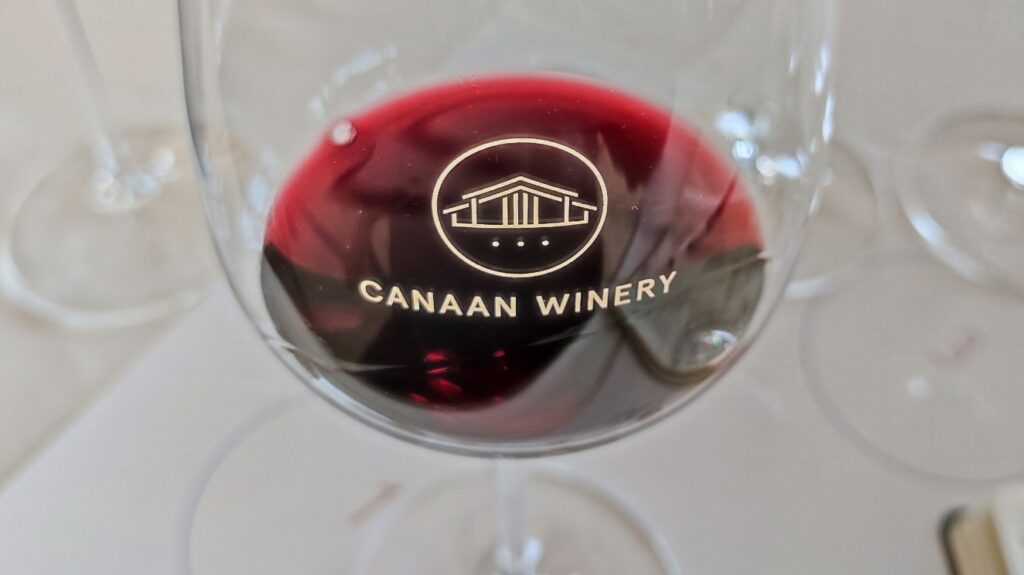
In general these reds are clean and balanced, with vibrant aromas, fresh fruit and integrated tannins, and praiseworthy based on international norms — the kind that can accumulate contest medals and high scores.
The Mastery level resounded most — much like Grace Vineyard’s Tasya’s Reserve level — including the Syrah 2019 with its intense purple streak in that first whiff of its subdued dark fruit. It was soon bursting with blackberry, blueberry and cassis as well as baking spices, graphite and hints of green grass / mint and vanilla. Vibrant and fresh with a nice light chewiness and peppery finish.
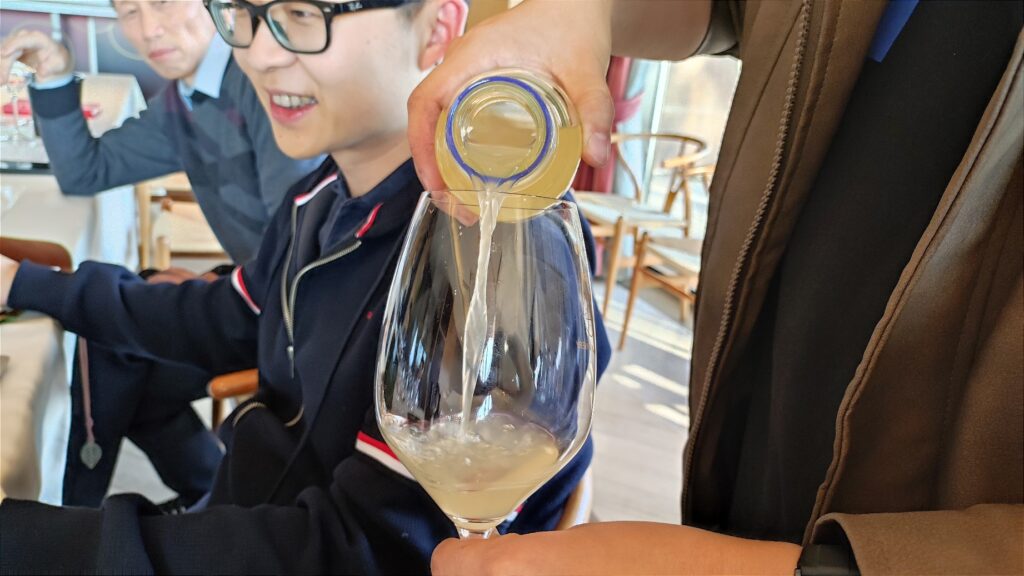
FIVE
Hungarian grape varieties are a rarity in China so it was a real treat to try a tank sample of Cserszegi Fűszeres from Amethyst. Owner Ma Shushen, who joined us, once lived in Hungary, thus the introduction of this cross of Irsai Olivér with Savagnin Rose, created in 1960, which I first saw at his winery in 2021.
The sample, brought by Amethyst winemaker Jiang Yanjun, was fresh and juicy, with stone fruit and Asian pear and mild grapefruit character. [Shuai also cited lychee.] I wonder if this might succeed as a pet-nat, both for stylistic and marketing reasons, notably for its appeal to China wine bars focused on niches.
A low-volume quality Chinese pet-nat made with a Hungarian grape that is seemingly impossible to pronounce and bottled under a hipster label? Sounds like a winner to me!
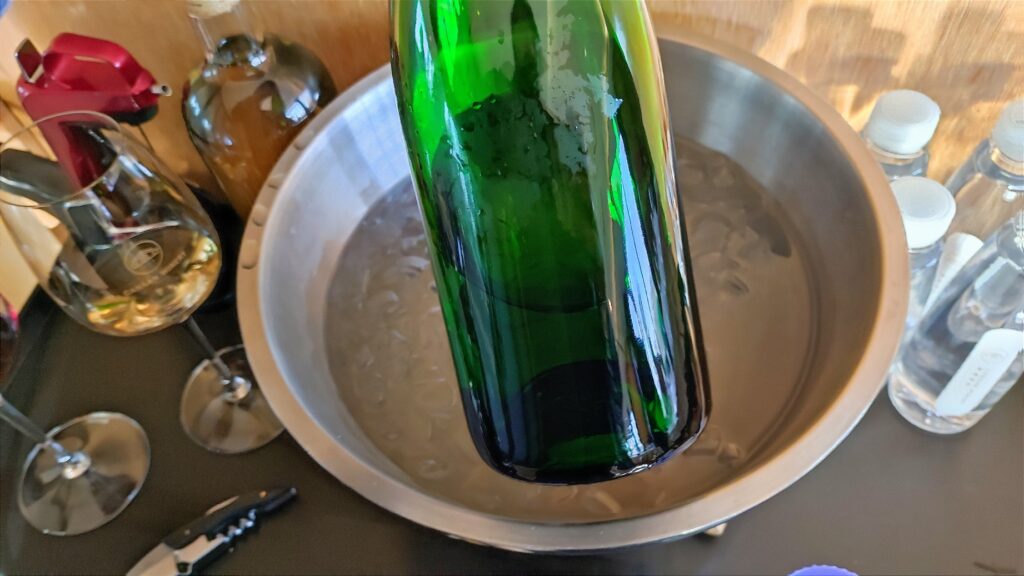
SIX
Another surprise was a 2006 traditional sparkling wine from SunGod, brought by winemaker Yu Qingquan. I first came across this wine at SunGod ahead of the then-upcoming 2008 Beijing Summer Olympics when it was still on lees and apparently destined for celebrations of that event.
Anyway, I think most people would be surprised this wine still drinkable after 18 years though it is firmly in “drink now” territory. It pours a pale lemon yellow with chrysanthemum, apricot and mild nut aromas. The bubbles are modest, the fruit light and the finish slightly bitter but I nevertheless found this fun.
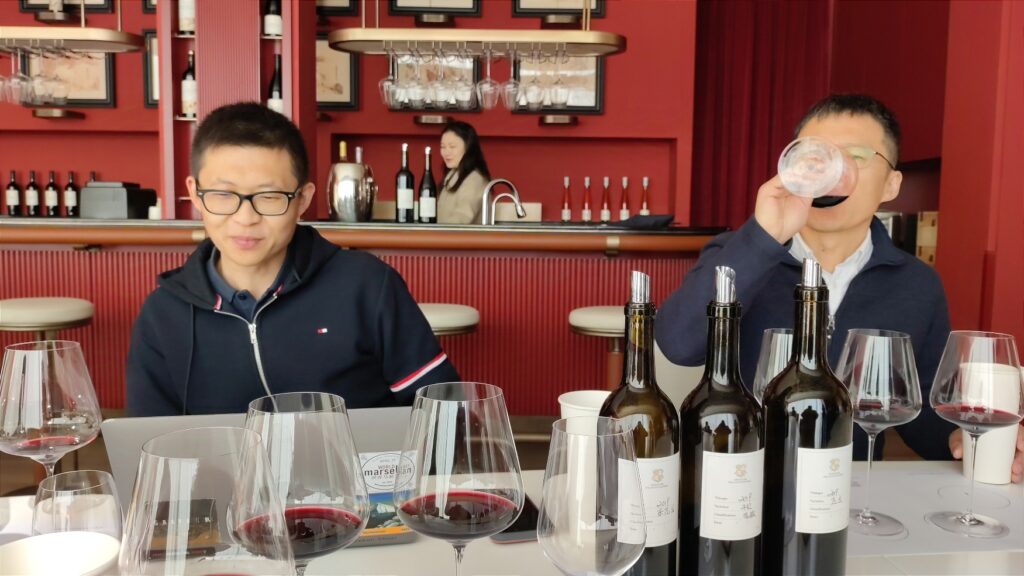
SEVEN
The next day we gathered with Zhou and his team in the new tasting room at sibling DFC, the seed of which was planted in 1997 as a joint China-France scientific vineyard before going private over a dozen years ago. (See my 25th anniversary post about DFC.)
DFC is best known as the home of Marselan, a grape that has spread across the country and often seen as its signature grape. And the 2019 we tasted was excellent, pouring deep ruby with pure ripe black and red berry fruit character. Juicy and chewy with polished tannins and whiffs of cocoa and toast and something a touch meaty.
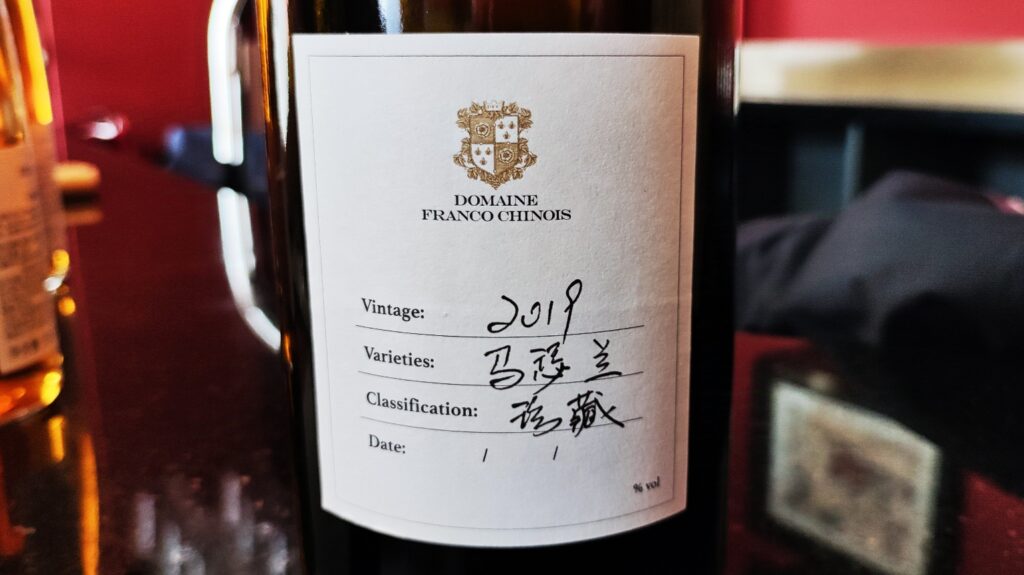
The tasting room lists six vintages of Marselan priced CNY1800 / USD253 to CNY3168 / USD445 and my guess is this one will lean toward the former, if not higher.
We also tasted several other reds, including the Grand Reserve that starts at CNY9800 / USD1376, and these were also consistently good across the board based on international norms.
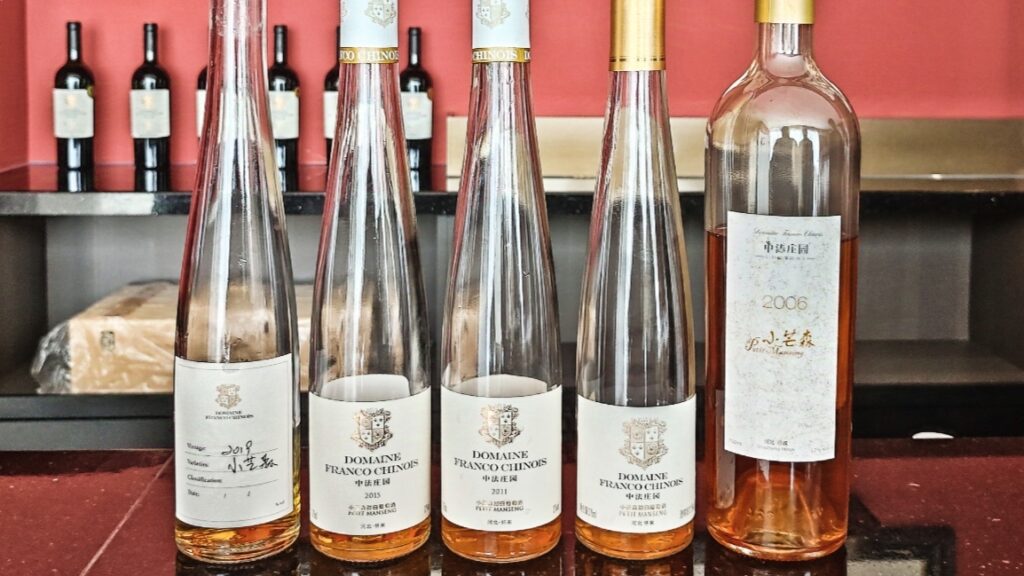
EIGHT
The highlight of this visit was a second grape synonymous with DFC and that makes pleasing wines for imbibers of all levels — the late-harvest Petit Manseng.
I’ve written previously about sourcing this wine even before DFC had a commercial license, including for a friend’s wedding in 2009, and I expected to be tasting a new vintage on this trip.
Instead, we tried five vintages, including 2006, 2010, 2011, 2015 and 2019, and I was impressed by the quality, vintage variation and aging ability of these wines.
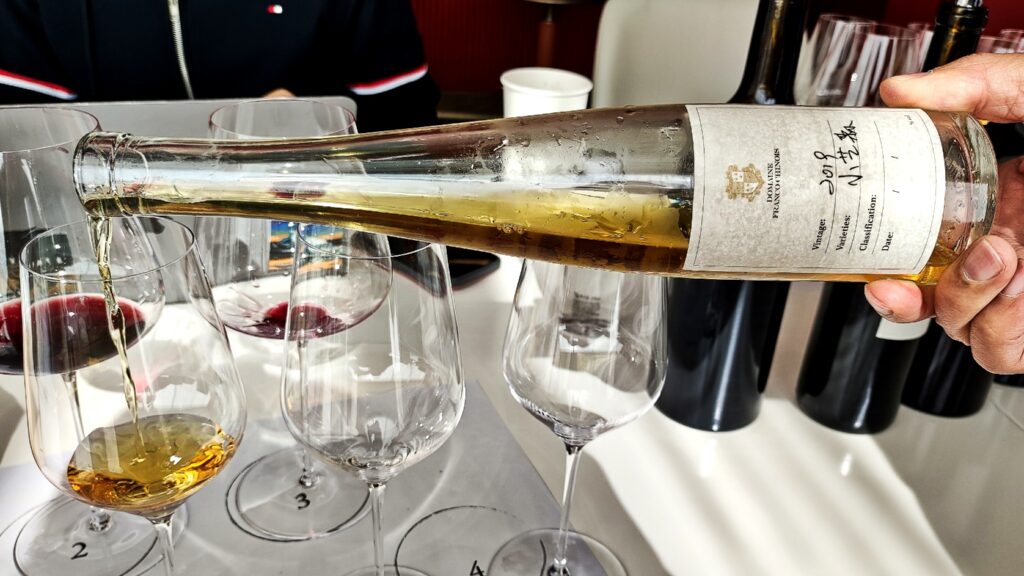
The 2019 and 2015 are good examples. The 2019 is medium amber, with an electric orange edge, featuring light spiced honey with ripe pineapple, baked apple and dried apricot character plus touches of spice and dried grass. [Shuai also cited mango.]
In contrast, the 2015 hailed from a cooler vintage and was lighter and racier, with greener honeyed aromas, ripe guava and touches of smoke that grew. Fresh and vibrant with a nice spiced sweetness. [Shuai pegged this as having the most aging potential.]
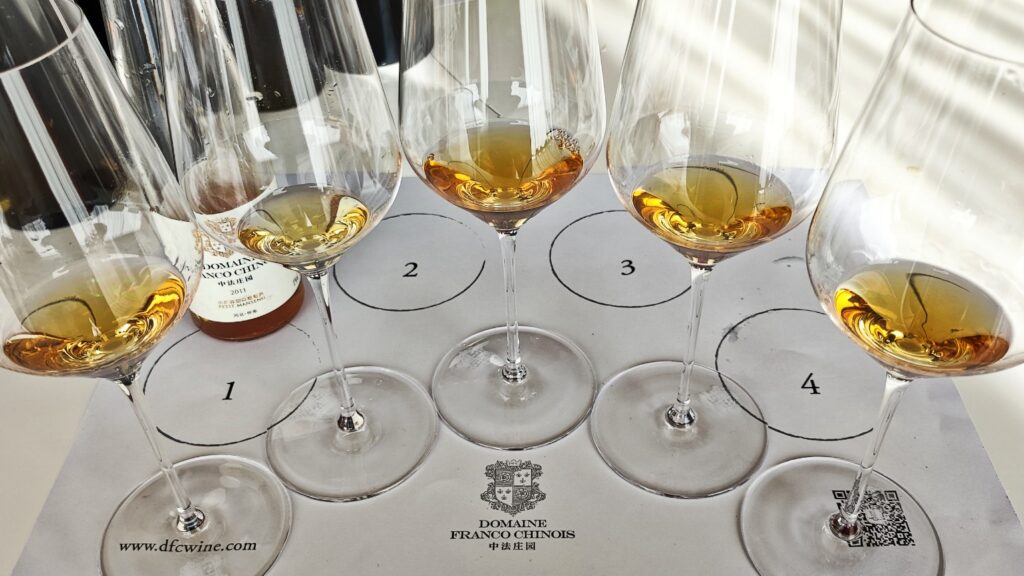
Meanwhile, the 2011 reverted to that more intense honey character, with ripe apples and dried tropical fruit, while the 2010 had more of a toffee aspect, and was slightly voluptuous with hints of green freshness, a steady sweetness with a nice spiciness.
It was also a treat to try the 2006, made when DFC was a joint China-France government project, more than a decade before any of its wines would go on sale, This one was similar in color to 2019, but slightly deeper and flatter. Light and playful up front, with honey and vanilla notes – Shuai pointed out OREO cookies – plus ripe apricot and apple, and light caramel notes at the finish. That was special.
All in all, intriguing tastings with plenty of surprises spread over two days, bridged by a dinner with two dozen people from Canaan, DFC, Amethyst and SunGod — and lots of BYOB.
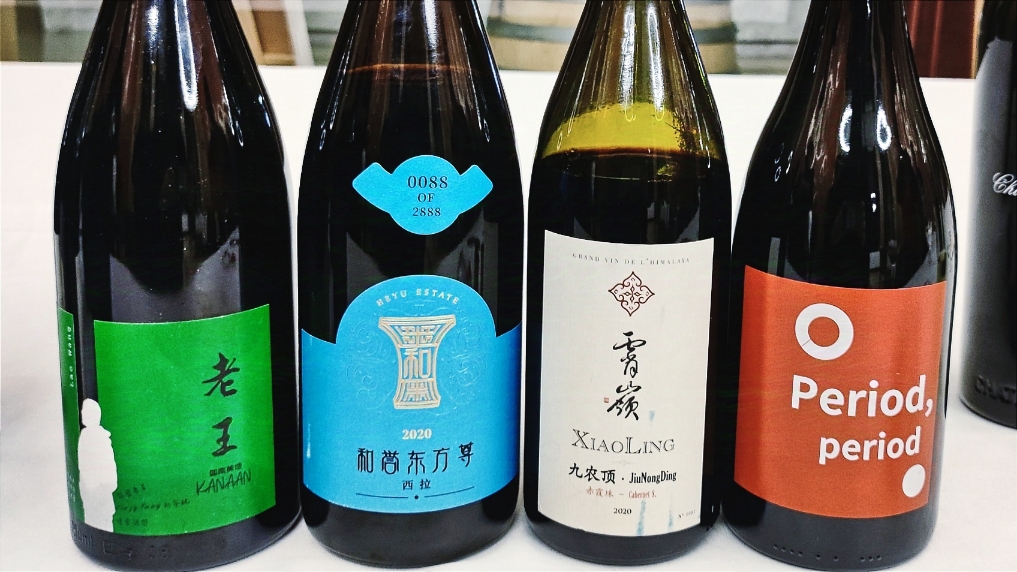
I brought “Period, Period” from area winery Gloriville, a natural Marselan with pronounced acidity that proved a nice contrast to DFC’s. And a bottle from the other Kanaan — the one with a K and based in Ningxia.
Syrah from Canaan and Kanaan side by side and expressing two very different regions? Yet another interesting moment on a worthwhile trip.
And further highlighting the growing domestic choices, alongside a world of imports, that wine consumers enjoy in China — now we just need to get them drinking more.
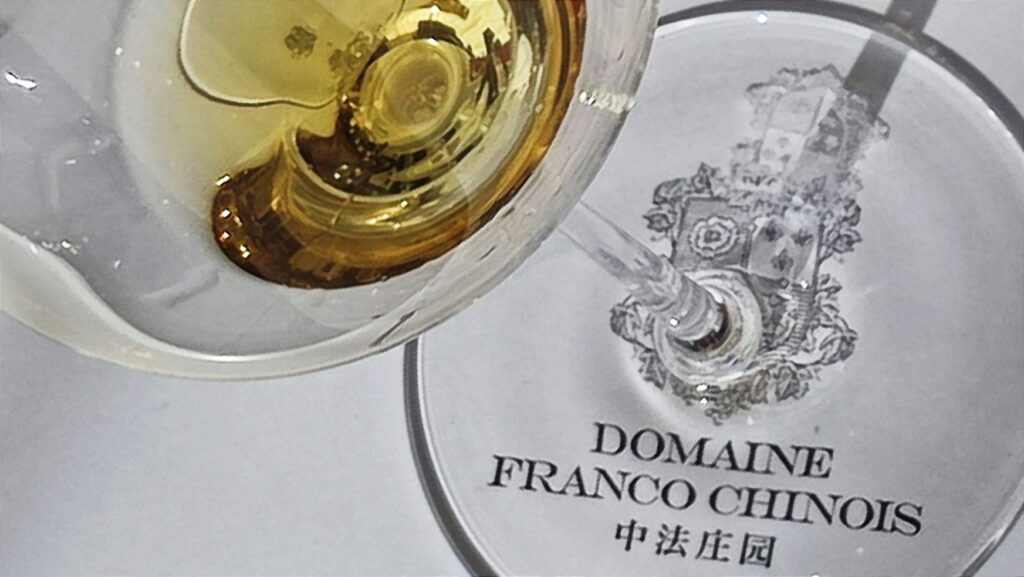
Grape Wall has no sponsors of advertisers: if you find the content and projects like World Marselan Day worthwhile, please help cover the costs via PayPal, WeChat or Alipay.
Sign up for the free Grape Wall newsletter here. Follow Grape Wall on LinkedIn, Instagram, Facebook and Twitter. And contact Grape Wall via grapewallofchina (at) gmail.com.

Leave a Reply
You must be logged in to post a comment.